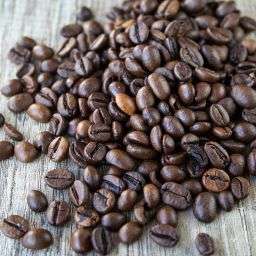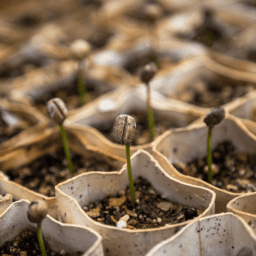
Coffee beans, often mistaken for simple kitchen staples, hold a complex nature shrouded in common misconceptions. These beans, integral to the beloved beverage coffee, are not beans in the botanical sense.
This introductory section demystifies the true nature of coffee beans, shedding light on their origin as seeds within the fruit of the coffee plant.
The Botanical Background of Coffee
The coffee plant, belonging to the genus Coffea, is a flowering shrub that produces fruits known as coffee cherries. These cherries vary in color from green to bright red or purple as they mature, each containing the precious seeds we know as coffee beans.
The diversity within the Coffea genus, including well-known species like Arabica (Coffea arabica) and Robusta (Coffea canephora), contributes to the vast array of coffee flavors and qualities available today.
Coffee Beans: Seeds Not Beans
Contrary to popular belief, coffee beans are not true beans. In botanical terms, a bean is a seed from the legumes family, which coffee is not part of. Coffee beans are, in fact, the seeds of the coffee cherry, making them a misnomer in everyday language.
This distinction highlights the intricate relationship between the fruit and the seed, underscoring the unique nature of coffee in the plant kingdom.
The process from cherry to bean involves careful cultivation, harvest, and processing, further emphasizing the coffee bean’s departure from typical legume characteristics.
Harvesting and Processing
The transition from coffee cherry to coffee bean begins with the meticulous harvesting of ripe cherries. This process can be done either by hand-picking, ensuring only the perfectly ripe cherries are selected, or by strip harvesting, where all cherries are removed from the branch at once. Following harvest, the cherries undergo processing to extract the beans.
There are two primary methods: the dry method, where cherries are laid out in the sun to dry before the outer layers are removed, and the wet method, which involves removing the cherry’s pulp before the beans are dried. Each method significantly influences the flavor profile of the coffee.
The Role of the Coffee Fruit
Once harvested, the coffee fruit embarks on a transformative journey. After processing, the exposed beans are either sun-dried or mechanically dried to reduce moisture content.
The beans are then hulled, graded, and sorted, often by hand, to ensure quality. This meticulous preparation culminates in roasting, where the beans develop their characteristic flavors and aromas, finally ready to be ground and brewed into the coffee that graces our cups.
This journey from cherry to cup underscores the intricate processes behind coffee production, revealing the depth of care and craftsmanship involved.
Nutritional Value of Coffee Beans and Cherries
Coffee beans and the cherries that house them are laden with nutritional benefits. Rich in antioxidants, coffee beans contribute to health by reducing oxidative stress in the body.
The fruit itself, often overlooked, contains compounds like chlorogenic acid, which has been linked to improved brain health and lowered blood pressure.
These nutritional components offer more than just a caffeine boost; they contribute to a range of health benefits that extend well beyond the morning cup.
Environmental Impact of Coffee Production
The cultivation of coffee has significant environmental implications. Sustainable coffee farming practices, including shade-grown coffee, aim to preserve biodiversity, reduce the use of harmful pesticides, and minimize water consumption.
However, conventional coffee farming can lead to deforestation, soil degradation, and water pollution. As consumers become more environmentally conscious, the demand for sustainably sourced coffee is increasing, driving changes in the industry towards more responsible production practices.
FAQs
Why are coffee beans called beans?
Despite their name, coffee beans are not true beans. They are termed ‘beans’ due to their resemblance to true beans in shape and size. In botanical terms, coffee beans are the seeds of the coffee cherry, a fruit produced by the coffee plant.
The misnomer persists from historical categorizations and common language use, rather than an accurate botanical classification.
Can you eat coffee cherries?
Yes, coffee cherries are edible and have a sweet taste when ripe. The flesh of the cherry is consumed in some coffee-producing countries, either fresh or as a tea.
However, it’s the seeds or ‘coffee beans’ inside the cherries that are most valued for their use in making coffee. The fruit surrounding the beans is typically discarded during the coffee production process, although it has nutritional value and is sometimes used in health supplements.
The Fruitful Journey of Coffee
The journey of coffee from cherry to cup is a testament to the complexity and richness of this beloved beverage. Coffee beans, in reality, are seeds nestled within a fruit, challenging common misconceptions about their nature.
This exploration reveals the intricate processes involved in coffee production, from the meticulous harvesting and processing of coffee cherries to the roasting and brewing that culminates in the coffee we enjoy.
Additionally, the nutritional benefits of coffee beans and cherries highlight the health aspects beyond the caffeine content, while considerations of the environmental impact of coffee cultivation underscore the importance of sustainable practices.
The narrative of coffee extends far beyond a simple morning ritual, embodying a deep botanical background and a significant journey that brings this fruit to our cups.









